|
| A |
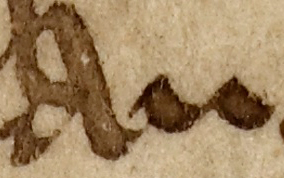 | Usage: planete
the scribe's 'a's are frequently much larger than surrounding letters. | 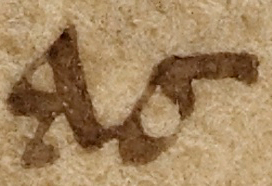 | Usage: as |
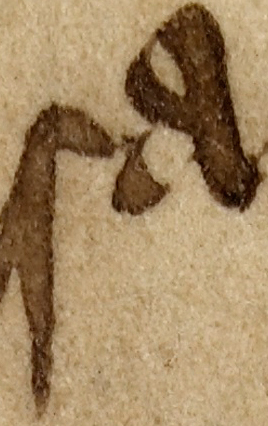 | Usage: forsayd
long 's' followed by 'a'. This example admirably demonstrates the uneven nature of the scribal hand with 's' set low and the 'a' graph enlarged. | 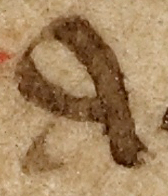 | Usage: And
an actual upper case 'A', smaller than some of the lower case letters used within words. |
|
| D |
 | Usage: m(er)ydional
looped 'd' used on the majority of occasions. | 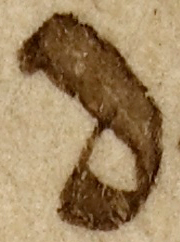 | Usage: day
a few examples of unlooped 'd' on this folio. |
 | Usage: altitude
'd' with following 'e' tucked into the angle created by the shape of 'd'. | 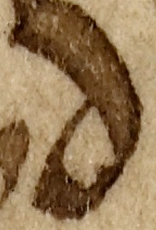 | Usage: forsayd |
|
| G |
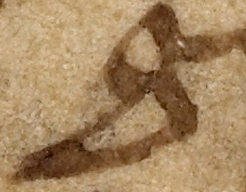 | Usage: gree
the only two samples of 'g' on this folio are both for this word. The long triangular shape of the lower compartment is distinctive. |  | Usage: gree
a slightly more angular presentation of the top lobe of the letter. |
| | | | |
|
| H |
 | Usage: his
neat triangular looped head-stroke and short, contained tail as an extension to the limb. | 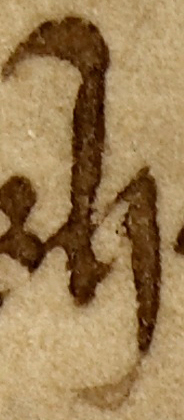 | Usage: wheþ(er)abbrev.
'h' with head-stroke turning to the left. A 'b' used in the word 'be' on the same line also uses the reversal of the head-stroke. |
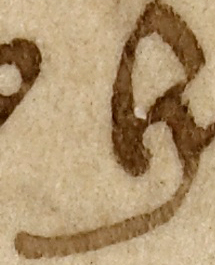 | Usage: hiȝte
the tail-stroke of 'h' extends back to end beneath the last letter of the previous word. | 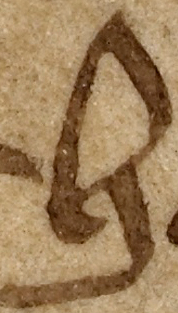 | Usage: shewiþ |
|
| R |
 | Usage: fro
modern 'r' used slightly less frequently than long 'r' on this folio. |  | Usage: norþ
a fork-shaped long 'r' open from base to top. |
 | Usage: for
long 'r' in final position at the end of a line. |  | Usage: gree
image to show the relative position of long 'r' with surrounding letters. |
|
| S |
 | Usage: souþ
sigma 's' in initial position. Long 's' also used in initial position. |  | Usage: so
long 's' used initially and medially. |
 | Usage: his
sigma 's' always used in final position on this folio. |  | Usage: son(n)e
the position of long 's is seen clearly here with the head of the letter level with the following graph. The slight horned extension can also be seen in version 2. |
|
| W |
 | Usage: wey
a 'w' on the top line, scribed with more care than the succeeding examples. |  | Usage: wheþ(er)abbrev. |
 | Usage: when(n?)e
perhaps when copying at greater speed, the scribe makes a continuous stroke between left and middle branches of this letter. This forms a loop above the second descending stroke. |  | Usage: swich |
|
| Y |
 | Usage: wey
the scribe's 'y' is usually dotted and the tail descends at a slight angle with little return. |  | Usage: yn |
 | Usage: yf
occasionally the 'y' is undotted and the tail returns back to the body of the letter. | | |
|
| Thorn and Yogh |
 | Usage: norþ
wherever 'th' is required on this folio, this scribe always uses thorn. In all articles, pronouns and demonstrative adjectives which begin with 'th', the thorn graph is used as also in this example where 'th' occurs at the end of a word. | 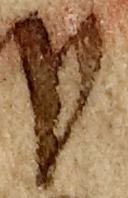 | Usage: shewiþ
thorn is also used for this verb ending. |
 | Usage: heȝer
yogh used for 'gh' in comparative adjective. |  | Usage: hiþte |
|
| p |
 | Usage: planete
although all three examples of this letter are the initial letters of the same word, they demonstrate quite clearly the scribe's formation of the letter. All are at a slight angle with lead-in hook and angled corner to the lobe. |  | Usage: planete |
 | Usage: planet | | |
|
| Ampersand |
 | Usage: &
each example demonstrates the wavy stroke which occurs above the ampersand. |  | Usage: & |
 | Usage: & | | |









































